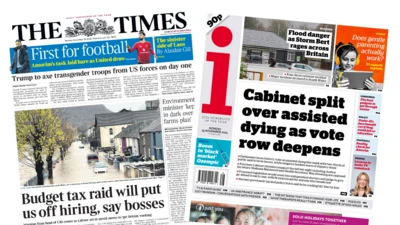We've updated our Privacy and Cookies Policy
We've made some important changes to our Privacy and Cookies Policy and we want you to know what this means for you and your data.
UK's ethnic minority numbers 'to rise to 20% by 2051'
Ethnic minorities are set to make up a fifth of the UK population in 40 years, a University of Leeds study predicts.
It says the proportion of black, Asian and other ethnic minorities will rise from 8% of the population, as recorded in the 2001 census, to 20% by 2051.
Researchers say the population will reach nearly 78 million - up from 59 million in 2001.
One of the authors, Professor Philip Rees, said the UK's ethnic make-up was "evolving significantly".
He said: "Groups outside the white British majority are increasing in size and share, not just in the areas of initial migration, but throughout the country, and our projections suggest that this trend is set to continue through to 2051.
"At a regional level, ethnic minorities will shift out of deprived inner city areas to more affluent areas, which echoes the way white groups have migrated in the past.
"In particular, black and Asian populations in the least deprived local authorities will increase significantly."
The Leeds study suggested the population is also set to become more racially diverse as well as less segregated over the coming years.
Prof Rees said the number of people identifying themselves as being of "mixed race" would rise from 1.2% to 4.2%.
The study, based on computer modelling, suggested white British and Irish populations would grow slowly while the "other white" ethnic group would be extremely fast growing.
This was because of expected high levels of immigration from Europe, Australasia and the US.
In 2051 the number of British people classed as white was predicted to be 79%, compared with 92% now, the research suggests.
Projections
The researchers formed their predictions following a three-year study.
The results include population projects for England's 352 local authorities and Wales, Scotland and Northern Ireland for every year over the next 40 years.
They examined ethnic population trends at a local scale in the UK and then used a computer model to project those trends under a variety of scenarios in the future.
They also used data already available on the 16 that had been used in the and also considered other demographic factors including immigration, emigration, fertility and mortality.
But Prof Rees, said it was not an exact science.
He said: "It is impossible to predict exactly how people will move into, out of and within the country... as all of these trends are influenced by a whole range of socio-economic factors."
ґуПуґ«ГЅ UK Affairs Correspondent Tom Symonds said although immigration to the UK had increased over the last decade, official statistics show birthrate is playing a bigger part in changing the make-up of the population.
Baby boost
He said the statistics show that, in particular, recent immigrants are more likely to be of child-bearing age, resulting in something of a baby boom.
The Leeds researchers say they expect minority groups to move from deprived local authorities to more affluent areas.
Other groups set to increase rapidly include those of south Asian origin and from countries such as India, Pakistan and Bangladesh, where immigration into the UK has been high in the past.
In October the Office for National Statistics predicted the population would exceed 70m by 2029.
Last week the government announced it was examining other ways of measuring population and other statistics rather than carrying out an expensive census.
Top Stories
More to explore
Most read
Content is not available








